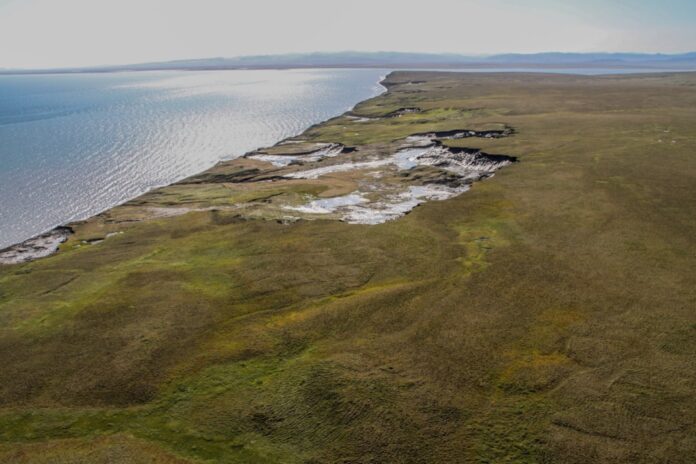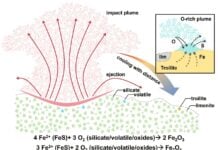The accelerating thaw of permafrost in the Arctic is injecting a significant amount of ancient carbon into the central Arctic Ocean, according to a new study. This influx of carbon, primarily in the form of dissolved organic matter (DOM), has profound implications for both the Arctic ecosystem and the global carbon cycle.
Normally frozen for centuries or millennia, thawing permafrost releases decomposed plant, animal, and microbial matter. Rivers carry this “terrestrial DOM” into the Arctic Ocean, where it dissolves and mixes with seawater. This process adds a significant amount of organic carbon to the ocean, rivaling the total CO2 present in the atmosphere.
The central Arctic Ocean receives an unusually large proportion of this terrestrial DOM due to extensive permafrost thaw, river discharge, and coastal erosion. Researchers led by the Alfred-Wegener-Institute (AWI) found that around 16% of the dissolved organic carbon in this region originates from land. Surprisingly, this terrestrial carbon persists even at great depths, suggesting it can travel through ocean currents to the North Atlantic Deep Water—connecting Arctic processes with global carbon cycling.
A Carbon Highway Through the Arctic
The Transpolar Drift, a powerful surface current, acts as a major pathway for transporting DOM across the Arctic Ocean towards the North Atlantic. Regions influenced by this drift exhibited double the amount of organic carbon compared to surrounding areas. Researchers estimate that approximately 39 million tons of terrestrial carbon are carried from the Arctic into the Atlantic every year via this “carbon highway.”
Impacts on the Arctic Ecosystem
The addition of terrestrial DOM significantly alters the Arctic Ocean’s carbon cycle by influencing light penetration, nutrient availability, and microbial processes—all essential factors for marine life. While climate change is driving increased freshwater inflow in general, the specific impact on DOM concentrations in the Arctic Ocean has been unclear until now. This study fills a critical knowledge gap by quantifying this influx of terrestrial carbon and its vertical distribution.
As global warming intensifies, permafrost thaw will likely accelerate, leading to even greater inputs of terrestrial DOM into the Arctic Ocean. These findings highlight the urgency for incorporating these projections into climate models to accurately predict future changes in the Arctic’s carbon sink capacity and its influence on global climate change.









































